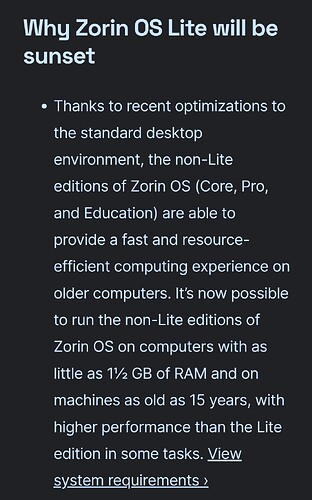I would recommend installing Zorin OS Lite. You can try either; but in my direct experience, Lite will be snappier on those specs.
As I understand the intent; It is projected that by Zorin OS 19, Gnome will be fine tuned enough to be equal to XFCE in it's resource usage.
However... Current benchmarks call this into question.
Part of the trouble is the architecture of each, where Gnome's base architecture would need a complete rework to be as lightweight as XFCE.
So far, Gnome has made no comment nor commitment to any such rework. Claiming that Gnome can be or will be as lightweight as XFCE is a very bold and currently completely unsupported claim.
XFCE4 is deliberately minimalist, modular, and conservative in terms of system resources.
XFCE4 typically boots at around 300–500 MB of RAM, depending on distro configuration.
It uses a lightweight compositor which also is often disabled by default on very low-end hardware.
CPU usage is very low at idle, with low overhead even under moderate multitasking.
GNOME 42–46 is heavily integrated with GTK, mutter, and systemd services; which adds to complexity and resource needs. At idle it typically uses 700 MB to over 1 GB, depending on extensions, background services, Wayland vs. X11, and Zorin OS defaults.
CPU Usage is higher than XFCE at idle, and mutter's compositor can spike CPU/GPU usage even when idle on lower-end machines.
GPU Acceleration is deeply tied into its architecture. Performance is improved if GPU is available; otherwise, it can stutter.
GNOME has made improvements in responsiveness and framerate (mostly focusing on Wayland) by having better GPU acceleration support, compositor pipeline improvements including triple buffering and lower latency paths.
It has partial support for input and frame throttling.
These increase smoothness and subjective feel of responsiveness, not raw memory or CPU efficiency.
This is where the confusion lies: smoother performance in Gnome D.E. as an improvement is not the same as lighter performance.

